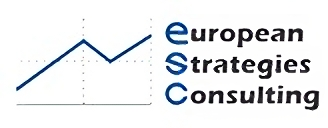In 2010 the European Organisation for Probation (CEP) commissioned a literature review on resettlement research and practice in Europe. The terms of reference were:
• To map resettlement best practices in Europe;
• To identify what the known key factors for successful resettlement are
• To outline pilots to improve resettlement practice which could realistically be included in a EU-funded project
Therefore the paper aimed at providing a critical overview of resettlement research and practices as they are developed and implemented internationally. The presentation mode was a blended one: first the what works information presented as derived from the research and then second practices and initiatives based on these what works ideas are introduced. This approach was chosen a priori in order to capture also the dynamic between research and practice. This decision was made considering that sometimes in the process of ‘technological transfer’ from research to practice, knowledge suffers many distortions or fragmentations (Andrews and Bonta, 2006; Bourgon et al., 2010; Raynor et al., 2010). Thus this paper also identified the limits (Lewis, Maguire, Raynor, & Vanstone, 2007) of technology transfer into real life settings. For the sake of clarity the most important studies that reflect what works in resettlement are summarized at the end in the Annex. The final part of the paper synthesizes what is the state of art in the resettlement field and suggests new ways for advancing knowledge and practices for a safe return of prisoners into the open society.
The term resettlement is used in this paper as ‘the process of reintegration back into the community in a positive and managed way’ (Mead, 2007: 268) after serving a prison sentence. The term is more morally neutral comparing to the old terminology such as aftercare or throughcare (in England and Wales) that imply that ex-offenders are in need of care. Furthermore the term covers all programs or interventions run inside or outside prison that aim at overcoming the obstacles or assisting the ex-prisoner in the reintegration process. In this sense the term resettlement is close to the American concept of reentry as it was defined by Petersilia (2003): all activities that cover how prisoners spend their time during confinement, the process of release and their supervision after release.
In order to identify the relevant literature on this topic several search methods had been used:
– Desktop research – conference papers, governmental reports, journals (such as Crime and Delinquency, Federal Probation, Probation Journal, European Journal of Probation and so on)
– Electronic search – in electronic databases such as: Social Sciences Citation Index, ProQuest, JSTOR, Google Scholar and Wiley InterScience. Keywords like resettlement, reentry, aftercare, throughcare, probation and parole were used alone or in different combinations.
– Networking – relevant experts and professional networks were consulted for relevant studies or programs.
For structuring the paper, an adapted version of the Taxman (2004) Five – Step Offender Active Participant Model was used. For the sake of simplifying and focusing the paper solely on resettlement and not on crime in general the Five Step Model is adapted into a Three Step Model: Institutional Treatment, Pre-release stage and the Post-release stage. For more details, please open the attached document.
